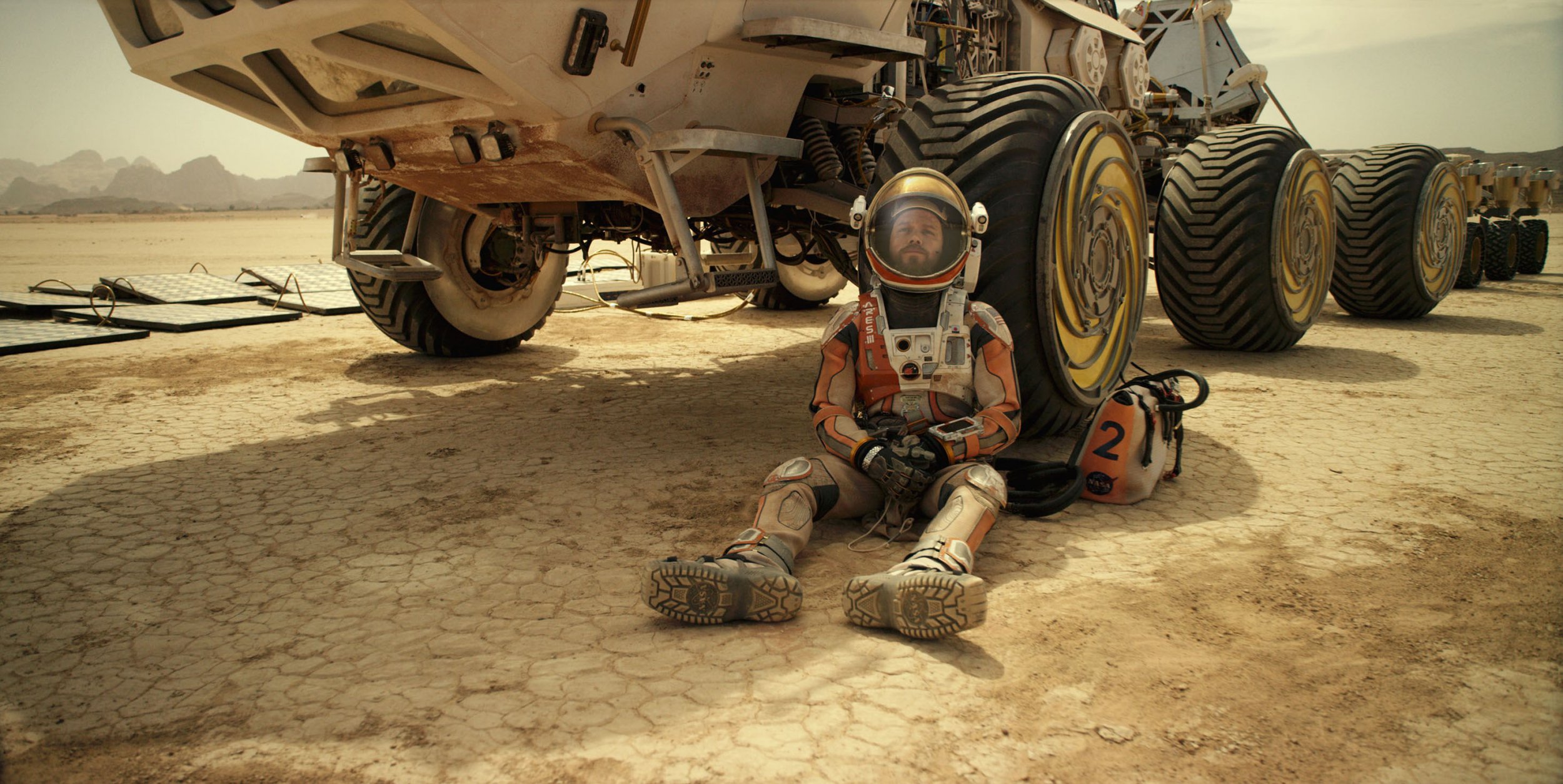Is ‘The Martian’ Based on a True Story?
There are people I'D like to send to Mars, lemme tell ya

The Martian, the 2015 movie directed by Ridley Scott and based on the novel by Andy Weir, tells the story of Mark Watney, an astronaut whose crewmates accidentally abandon him on Mars during an emergency evacuation. With no way home, Mark has to get creative in order to survive, growing potatoes in Martian soil and communicating with Earth via a decommissioned rover. The Martian is as fascinating as it is fun, as we watch Mark, his crewmates, and Mission Control tackle problem after problem to get him home.
Back when the movie came out, there was a flurry of articles reporting that people thought the movie was based on a true story. These reports seem to have been based solely on tweets—and, I couldn’t help but notice, lots of men getting clout by exploiting the sexist trope of women being scientifically illiterate—so take them with a big grain of salt. Still, the average viewer can’t be blamed for wondering: even if the movie takes place on a planet we haven’t actually been to yet, is any of the story based on real science?
Yes, it is! Andy Weir was working as a software engineer when he first wrote the novel, which he posted in installments on his website. In an interview with NPR, he said that the idea for the story came to him when he was “sitting around thinking about how a manned mission to Mars could actually work using today’s technology. Then I started thinking about all the things that could go wrong. So I created an unfortunate protagonist and subjected him to all of it.”
When Weir’s novel was adapted to film, Scott went to NASA for help making sure the science was as accurate as possible. James L. Green, Director of the Planetary Science Division at NASA’s Science Mission Directorate, coordinated the NASA staff members who answered Scott’s questions. NASA even let the film crew base their designs off of real NASA technology, like spacecraft and prototype habitation modules.
That means that while the story is fictional, a lot of the cool stuff Mark comes up with to survive is based on real science. However, the movie wasn’t able to get everything exactly right.
The Science Behind The Martian
Mark faces numerous challenges during his time stuck on Mars. He has to figure out how to manufacture oxygen, water, and food for himself, not to mention keep warm and figure out how to communicate with Earth.
Thanks to Weir’s research and NASA’s involvement, many of Mark’s solutions are pretty close to what would actually keep an astronaut alive if they were stranded. For example, in the film, Mark establishes communication with Earth by traveling to NASA’s Pathfinder probe and coming up with a software patch that allows him to send messages to its prototype on Earth. The Pathfinder probe actually does exist on Mars. It was launched in December 1996 and arrived on Mars in July 1997, where it spent about three months analyzing Mars’s climate and soil before the battery failed and the probe succumbed to Mars’s frigid temperatures in October 1997.
Another detail that’s based on real science is Mark’s ability to grow food in Martian soil. In theory, as long as Martian soil was enriched with the minerals and microbes that plants need to thrive, you could actually grow something in it. Plus, it’s no surprise that a fictional Mars mission would include a botanist, since astronauts are having increasing success growing plants off of Earth’s surface. In 2017, for instance, astronauts on the International Space Station successfully harvested mustard greens and two varieties of lettuce.
However, Weir and Scott found that it was impossible to tell a compelling story without fudging some of the details here and there. One of the most notorious inaccuracies in the movie is the brutal dust storm that kicks off Mark’s grueling ordeal. When winds climb to dangerous speeds around the astronauts’ base on the Martian surface, they fear that their Mars Ascent Vehicle (MAV) will be knocked over, rendering it incapable of flight. In fact, one of Mark’s crewmates has to fire a thruster during the storm just to keep the MAV upright long enough for everyone to board it. In reality, the Martian atmosphere is so thin that no wind could ever reach that much force.
Still, Weir doesn’t regret the creative liberty he took. In the NPR interview, Weir explains that he “went ahead and made that deliberate concession to reality” in order to tell a more exciting story, and rolled with it when people started pointing out the error. “I have inadvertently educated the public about Martian sandstorms,” he said. “And I feel pretty good about that.”
(image: 20th Century Fox)
Have a tip we should know? tips@themarysue.com